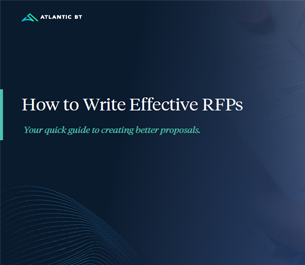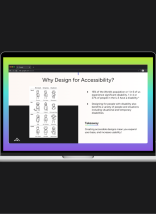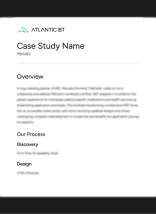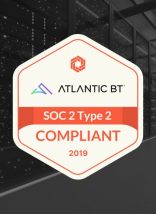Here you are. You’ve worked through every step. Established funds? Check. Gathered a team of dedicated superstars? Double check. Written your overarching goals? Mic drop. You’ve packed your metaphorical bags like a pro. Now, you’re eager for an excellent digital product at the end of this journey. Vital to your cause will be your ability to stay focused on the user experience (UX).
Ah, yes. You know what the future holds before you reach your end goal. Complicated strategy sessions will be plentiful. And mind numbing conversations about data feeds will be impossible to avoid. But, these less than glamorous tasks are important. Your user focus will make or break your efforts. Every decision you make should aim to better the experience for your users. Especially in the field of Higher Education. By prioritizing your users’ needs and experience, you will know your project is worth every drop of sweat you put into it.
I love user-centric projects in Higher Education. I hope that I can inspire you to stay excited about your project from start to finish. Think of this as a homemade meal you have before heading out on the long road trip that is your project.
Get Excited about Higher Education UX!
At Atlantic BT, we often start our Higher Education projects by evaluating everything. We look into the scope of research, content, design, governance, and marketing efforts. And we love it! Deep research is the best entry point for setting up a solid user centered process. Here are some of the very best reasons for you to share our excitement about your project.
Higher Education Has Dynamic Users
If you have been working in the Higher Education community for a year or more, you are going to have a solid foundation of user understanding. So, congratulations! You are your own subject matter expert. You probably also know you are working for a HIGHLY diverse set of users.
Students, faculty, and administration staff have unique motivations and objectives. In addition, technology norms are being redefined as quickly as digital progress itself. In any other space, this would be a daunting array of humans to try and understand. The education sector is unique in that it’s a highly studied topic with a litany of resources to glean insights from. When I want to better understand digital learning trends, I pop over to an open sourced journal, like informingscience.org, and do some light background reading.
As a researcher, it’s interesting to have such a broad range of users to consider, including students (both current and prospective), parents, faculty, staff, alumni, and community.Randy Earl, Senior Business Strategist & Research Manager, Atlantic BT
Lesson: Make learning about your users a regular practice. Start your user research with some informative reading on your target audiences. Check out some user research studies from the education sector, as well. I’ll kick you off with a great article from the famed Nielsen Norman Group on research design principles: University Websites: Top 10 Design Guidelines.
Higher Education Has Meaningful Outcomes
The prospect of changing someone’s life when you’re building a cat toy eCommerce website? Not high. The prospect of changing someone’s life when you are helping them decide on their future college, submit assignments, or present research? Pretty good! When it comes to long term outcomes, few UX projects have the same impact as those in the educational sector. In Higher Education projects, it’s a good bet that any new design or technology we implement will make a big difference, impacting the lives of thousands of students and faculty in their education and research.
This makes every UX decision even more meaningful. When we develop a school or college website, we are empowering current and potential students to make the best decisions regarding their academic future.
The cause of Higher Education is close to my heart, so I’m always excited to help college and universities adapt to their nuanced and rapidly changing needs.Gordon Chadwick, Information Architect, Atlantic BT
Lesson: Build strong, motivational objectives for your project. Being specific about the greater good your project offers will help steer conversations away from low-priority rabbit holes. When setting up success metrics, don’t get trapped focusing on standard conversion statistics. Seek to validate the project mission at every turn.
Higher Education Gathers Many Voices into One Solution
Let’s be honest—Higher Education projects can be complicated, especially if you are redesigning your web presence as a whole. We often work with stakeholders across departments who each have unique perspectives and needs. We understand that listening to every voice and working to balance concerns involves not only strategy but emotional labor. Forming a consensus can be a huge problem. That’s why it’s a great place to put the bulk of your planning and energy. In fact, this challenge can be a primary driver to your project’s success.
When our team took on the redesign of Campbell University’s website, there were 10 academic divisions (including a brand new engineering school) that needed to be brought under one domain. Each division had unique needs for what their portion of the website needed to convey, as well as their own ideas of how to convey it. By incorporating stakeholder feedback into the early planning stage, we were able to create a singular online presence with a consistent focus on content and quality.
Higher Education projects so often involve the process of unifying experiences across many associated agencies. The result is simplified interactions that encompass the learning institution’s brand.Corey Brinkmann, Creative Director, Atlantic BT
Lesson: In addition to their beliefs and opinions, collaborators have rich insights that might save the project from heading in the wrong direction. Digital projects are interdisciplinary ventures by nature. Ensure that insights are gleaned from a variety of experts before you get started.
Higher Education Staff Have a Lot of Passion
When it comes to Higher Education professionals, we often find their passion for the user experience matches ours. We have never been turned down for assistance in obtaining relevant data, recruiting for testing, or making time for design brainstorming sessions. Those who work in Higher Education are clearly dedicated to engaging with their academic community and are always eager to utilize the resources at hand. They strive for excellence in everything they work on, including their projects with us. This inspires us to rise to a high bar of expectation.
One of the best things about our Higher Education clients is they love to learn about their users. When we present our finding from analytics, surveys, or reviewing social media trends, our higher ed partners waste no time digging into our analysis and applying it to their work.Ernesto Frausto, Data and Content Strategist, Atlantic BT
Lesson: Keep your fire stoked as you work toward your goals. Enthusiasm and integrity will not only keep you on the right track, it will diffuse throughout your larger team. Positive outlooks are contagious.
Let’s Hit the Open Road!
The success of your higher education project will rely on how well you define your objectives, understand your users, and execute your solutions. Perform user research, stay focused on your end goals, and gain consensus early. This will help you travel smoothly from project kick-off to product launch.
Above all, stay excited! You are doing amazing and important work. If you’d like more inspiration, please learn more about our passion about Higher Education!








